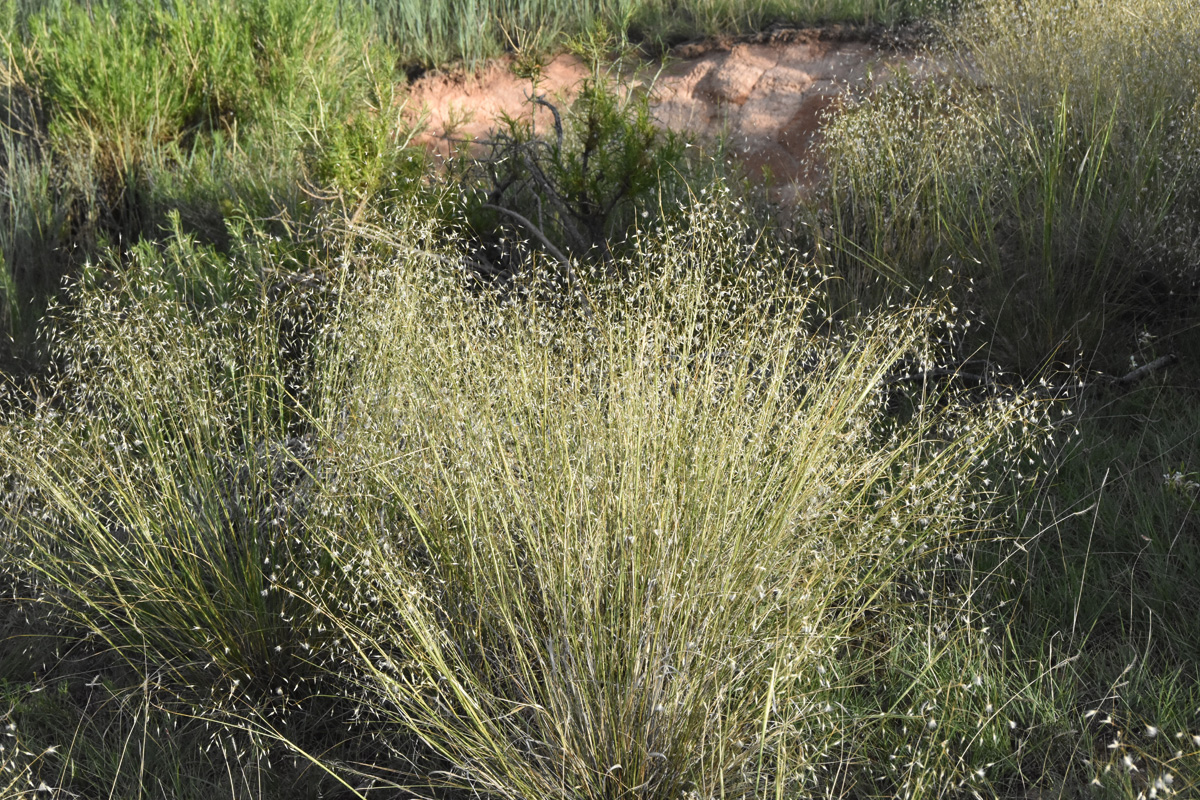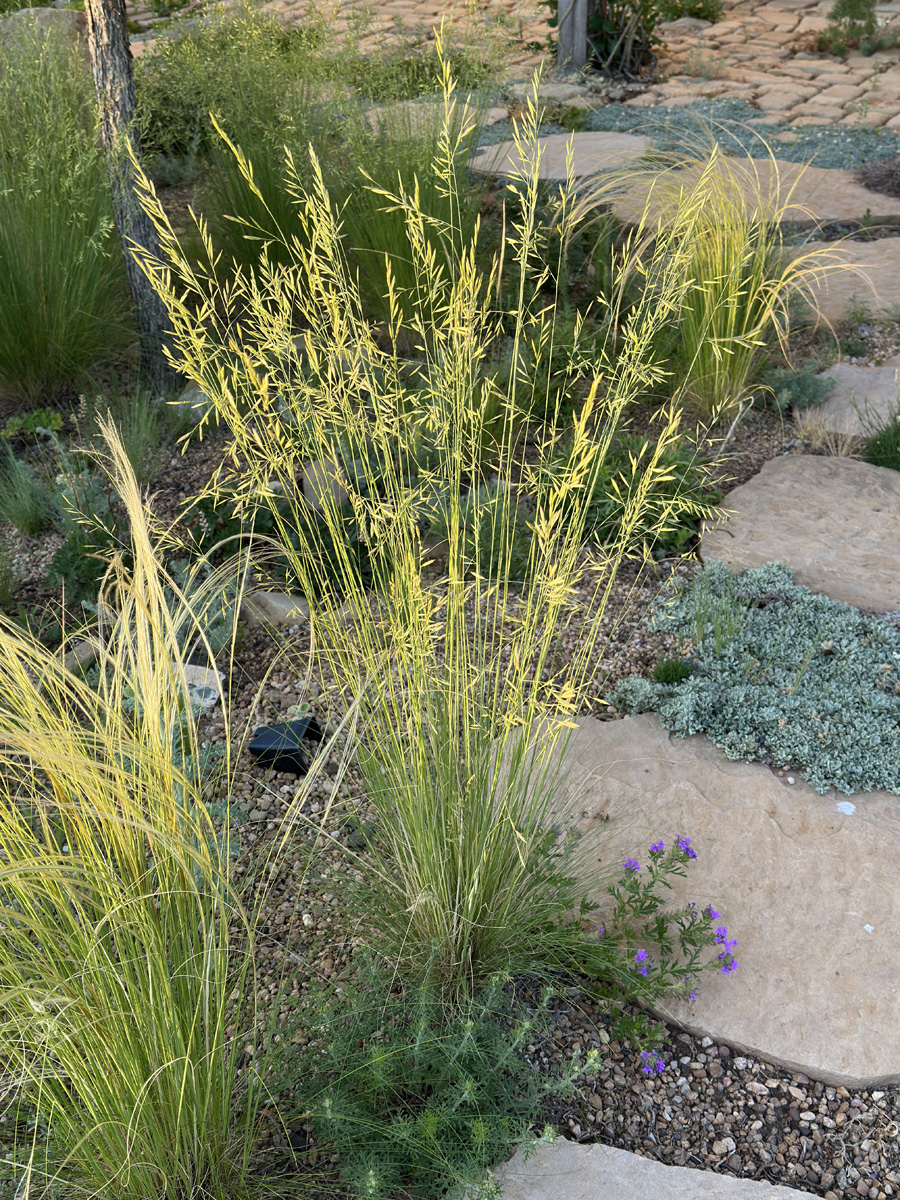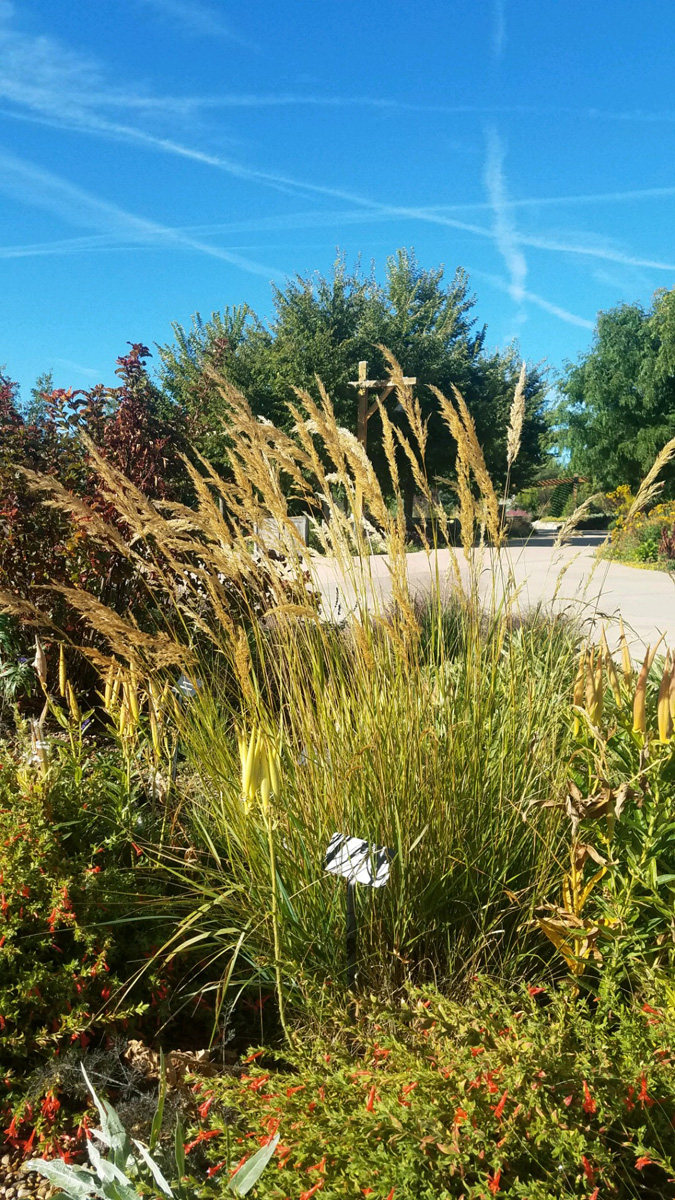Resplendent and easygoing, cool-season grasses are those that begin to grow with vigor during temperatures of approximately 60°F through mid-70°F. In our region, they green up in mid-spring, appearing as some of the first sprigs of substantial growth while bulbs flower by early summer.
In locales with cooler, moister summers, these plants remain green all season and comprise a majority of the local grass palette, making them key players in mountain gardens, especially those that don’t see enough summer heat for warm-season grasses to thrive. In warmer gardens like mine, they remain useful and can add visual interest, thanks to their feathered, shimmering seed heads. This feature appears midsummer, during our notorious floral slump, and continues to look good even during semidormancy when temperatures are routinely above 80°F. In my meadows, I often opt to include a warm- and cool-season grass layer to maximize weed suppression and the length of time that the garden appears lush and green.
Tufted hair grass
Seen occasionally in seasonally wet meadows across the Rockies, tufted hair grass (Deschampsia cespitosa, Zones 2–7) is, in every sense, a natural fit for mountain gardens. The species grows gradually, forming dense bunches of narrow, richly green leaves in early spring. The namesake for this plant is its flowers: rising on stiff stems to 3 feet, they take a flowing form and, thanks to a slight sheen, shimmer in the breeze.

Tufted hair grass is one of relatively few native plants used in regional gardens that appreciates a richer soil and performs best in spaces that are at least seasonally moist. This need can be easily met in areas with good winter snow cover (like mountain gardens), which often retain mentionable soil moisture content through mid-June. In warmer parts of our region, this grass does best with regular irrigation or afternoon shade. The variety ‘Goldtau’ offers a particularly robust plant that matures into a more mounded shape.
Ricegrass

For gardeners with drier soils, consider ricegrass (Eriocoma hymenoides, Zones 3–8; formerly Oryzopsis hymenoides and Achnatherum hymenoides). Despite the identity crisis surrounding this plant’s scientific name, it is steadfast in its penchant for thriving in sites that just plain fry most other native grasses. Forming a sleek tuft of wire-thin, emerald-green leaves in early spring, ricegrass thrives in the leanest and grittiest soils our region has to offer and can often be spotted from the car window popping up on gravelly roadsides where it is right at home. These plants bloom in early summer, like tufted hair grass, but do so with a much airier, almost see-through spray of round, fuzzy flowers and dangling, grain-like seeds. The nutritious morsels are a favorite of songbirds and small mammals alike and make lovely additions to dry floral arrangements where their delicate, wirelike stems belie their truly tough natures. Avoid clay and soils that sit wet when choosing a site for ricegrass, and keep it to full sun.
Arizona fescue

For more moderate locations, like those with varied soil textures and full or partial sun and average moisture, Arizona fescue (Festuca arizonica, Zones 4–8) has become a personal favorite. The native grass is bunching, just like ricegrass and tufted hair grass, and seeds only very lightly, so it doesn’t prove pushy or cause unexpected problems by spreading. It also presents for much of the season like the gorgeous-but-aggressive ponytail grass or Mexican feather grass (Nassella tenuissima), making it a great alternative.

Arizona fescue plants are exceptionally fine textured and keep a tufted form through spring before producing sprays of shiny, bright green flower heads atop slender stems. Both flowers and stems dry to a sleek, tawny color with the arrival of summer heat and remain good accents for dry gardens, including places with dappled sunlight and afternoon shade. This cheery grass is exceptional when backlit by morning or evening light and pairs well with most garden neighbors.

Undaunted® Alpine plume grass
Equally good when backlit, Achnatherum calamagrostis (Zones 5–7) remains a surprisingly underused option for cottage gardens, beds, and borders. Originally from Europe, the grass is an improved selection of the species introduced under the brand name Undaunted® Alpine plume grass by Lauren Springer through the Plant Select® program. Performing well in most soils and with moderate water, it produces numerous two- to three-feet-tall, glowing, golden tufts of feathery flower heads in early summer. Otherwise, it keeps a relatively lean profile of thin tufts of fresh green leaves.

In the garden, use it as a backing or interloper between dense perennials, where its flowing flower heads pop up over and between other plants. Well-behaved like other grasses in this piece, Undaunted® Alpine plume grass is bunching, not running, and doesn’t seed in a problematic manner. This grass is slightly less hardy than others discussed, performing best in Zone 5 or higher, though it is adaptable to both partial and full sun.

Other notable cool-season grasses
When it comes to cool-season grasses, options abound. Numerous other fescues (genus Festuca), feather reed grasses (genus Calamagrostis), and plume grasses (various Achnatherum species) excel in our mountain gardens. Since the only real hands-on management they require is a cutback each year, and because the majority look good for months after blooming, cool-season grasses can be incorporated in most gardens without any extra upkeep. Simply cut them back the same time you would cut warm-season grasses and most other perennials in late spring. In some cases, clever use of cool-season grasses can help to reduce weeding. These grasses grow in synchrony with many of our troublesome weeds, making bare dirt less available to them when compared to warm-season grasses, which grow well after cool-season weeds have germinated and gained a foothold. And, for mountain gardens, they remain the best options for diversifying garden textures and bridging periods of slower bloom.
See more Mountain West regional reports here.
To discuss these plants or ask other gardening questions, chat with the author on the Gardening Answers forum.
More on ornamental grasses:
Bryan Fischer lives and gardens at the intersection of the Great Plains and the Rockies. He is a horticulturist and the curator of plant collections for a local botanic garden.
All photos unless otherwise noted: Bryan Fischer
